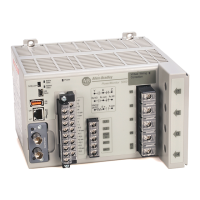10 Rockwell Automation Publication 1426-UM001J-EN-P - August 2019
Chapter 1 PowerMonitor 5000 Unit Overview
• Load profiling – logging power parameters such as real power, apparent
power, and demand, for analysis of power usage by loads over time
• Cost allocation – reports actual energy cost by department or process to
integrate energy information into management decisions
• Billing and subbilling – the ability to charge users of energy the actual
usage cost rather than allocating by square footage or other arbitrary
methods
• Power system monitoring and control – display and control power flow
and energy utilization
• Demand management – monitor power usage and controlling loads to
reduce demand costs
• Demand response – the controlling and monitoring of usage in response to
an instruction to reduce demand from an energy provider
• Power quality - monitors, measures, records, and logs power system
irregularities that can result in malfunctions or damage to equipment
PowerMonitor 5000 Unit
Features and Functions
The PowerMonitor 5000 unit connects to your three-phase or split-phase AC
power system directly or through instrument transformers (PTs and CTs). The
unit converts instantaneous voltage and current values to digital values, and uses
the resulting digital values in calculations of parameters such as voltage, current,
power, and energy.
Features
The PowerMonitor 5000 unit includes a number of hardware features that are
common to all models.

